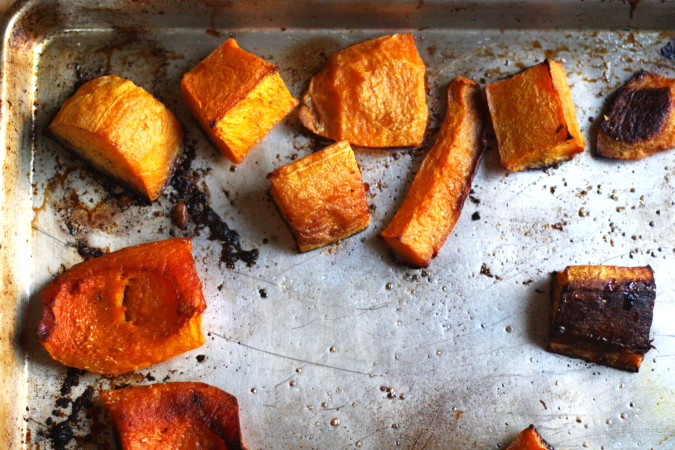Almost every Sunday you can find me at the Hollywood Farmer’s market with a smile on my face and a pocket full of dollar bills. If you see me just before noon, you’ll see me struggling to carry a cup of coffee in one hand and a week’s worth of fresh fruit and vegetables in my overloaded Lady of Guadalupe shopping bag, in the other. I like to limit myself to one bag, because it keeps me from buying too much produce that I’ll never get around to using.
Usually by week’s end, I am successful in creating dishes that include all of my market fresh ingredients. But come Saturday night when almost a full week has passed, I can usually find a few neglected vegetables in the refrigerator’s crisper that need using. Take for example last week. Even though I intended on cooking a beautiful Christmas dinner with some friends, the electricity was intermittent because of the Santa Anna winds, so at the last minute my husband and I ended up eating take-out Chinese instead. We enjoyed not cooking, but come Sunday morning when it was time to take accounting of what was needed at the market, I discovered a crisper full of wilted bunch of carrots with the greens still on, a head of cauliflower just starting to show signs of turning, a butternut squash and a handful of onions. Being mindful of our household budget, I decided to skip the market and make a pot of soup for the week from the vegetables at hand.
SUNDAY MARKET SEEN-BETTER-DAYS VEGETABLE SOUP
*only to be made as penance for when you’ve failed at making use of most or a good amount of your market vegetables.
Open the crisper. Take out all the produce you haven’t used all week. Forgive yourself for being lazy/busy/distracted by your life.
Separate the fresh ingredients from the produce that looks like it has seen better days. Seen-better-days produce like wilted veggies, limp carrots, half used onions and any other green that has lost its spunk, should be used for building the stock. The other vegetables should be saved for adding to the soup once the stock is made.
Put a large stock pot of water on the stove on high. While the water heats up, add the stock making vegetables. The fun part about this, is everything can go in. Carrots with the tops on. The whole bunch of wilted celery. Half up a few onions and whatever else you have laying around. Don’t worry about making this stuff look pretty. It’s all going to get tossed out once the vegetables are cooked down.
**Cook’s note: If you have one of those amazing pasta stock pots with the internal pasta basket, throw the vegetables in there. That way it will be easy to remove the cooked down/stock making vegetables.
Bring the water/vegetable pot to a boil and immediately bring down to a simmer. Let stock simmer until your kitchen fills with the aromatic smell of soup. At least an hour or more. While this is happening, prep your semi-fresh or fresh vegetables. Good veggies for soup are cauliflower, squash, kale, pea tendrils, onion, carrot, celery, etc. Cut your ingredients into uniformed bite sized pieces.
The stock is ready when the water has a distinctly new color (green/brown) and should have a sweet, vegetable flavor. When the broth is almost sweet with vegetable flavor, remove the cooked down vegetables from the broth.
Add the fresh ingredients, a bay leaf and some salt. Simmer for at least an hour.
Begin tasting your soup for seasoning. Enjoy this moment as you taste all of the flavors of the market intermingling. What flavors are more pronounced?
Once you know the basic flavor of the soup, add at least two to three tablespoons of soy sauce to the soup. Taste again. Believe it or not, this little step is going to make a HUGE difference in improving the flavor. By simply adding soy, suddenly the soup tastes hearty, as if you added chicken or beef stock. **Why is this? Well, according to a recent Wall Street Journal article, there’s something in soy sauce that elevates food to a whole other level and gives it a FIFTH FLAVOR. The Japanese call this satisfying meaty/savory flavor, Umami. But I digress. Add more soy if needed, according to your taste.
Simmer for another hour if you want the flavors to really come through. For a hearty soup, add hearty pasta noodles or leftover rice. You can also serve the soup over day old bread.
Serve the soup in warm bowls and finish it with grated Parmesean, to bring out even more satisfying flavors of umami!
Keep some soup in fridge for tomorrow and freeze what’s left in to-go containers or Tupperware for later in the week! Enjoy!

